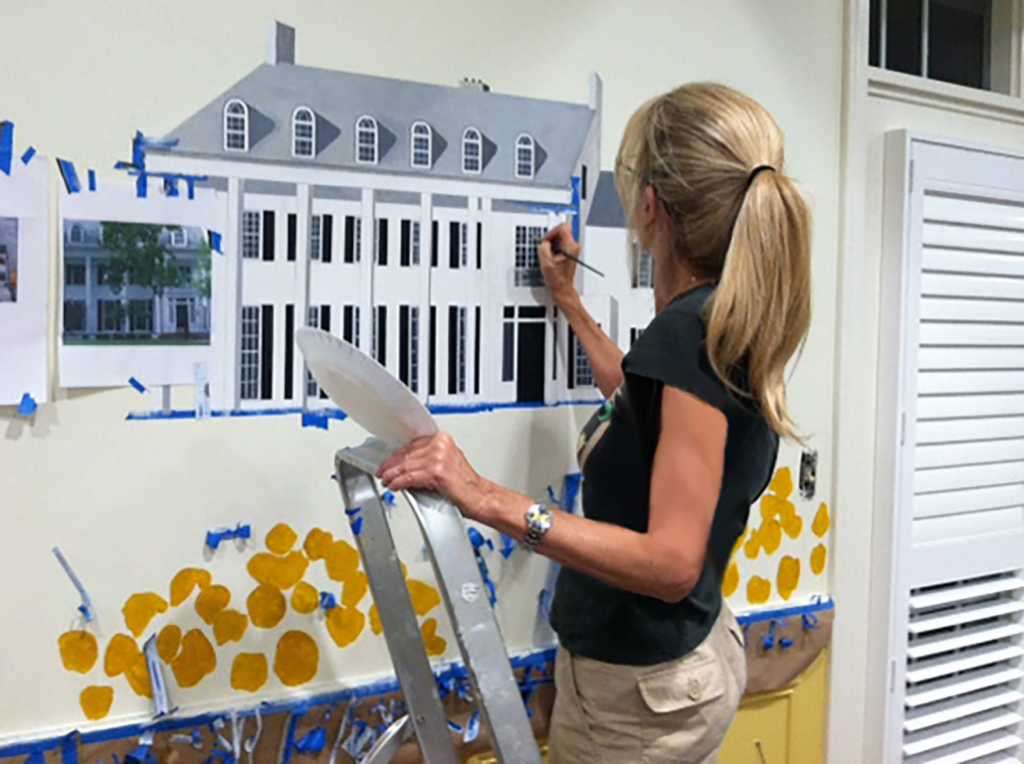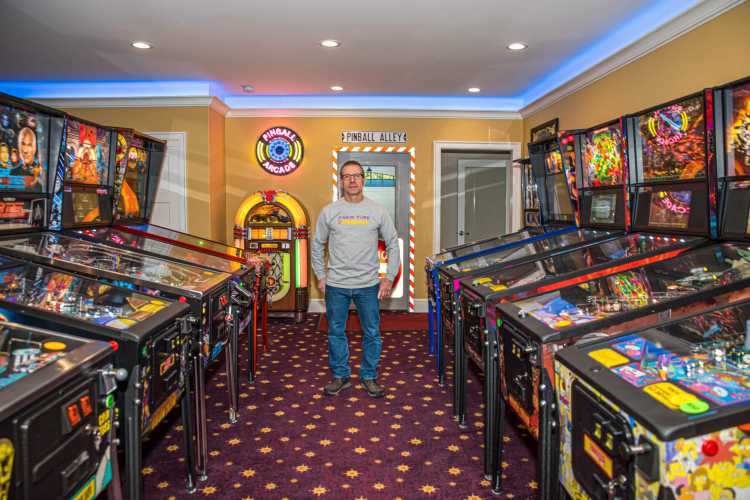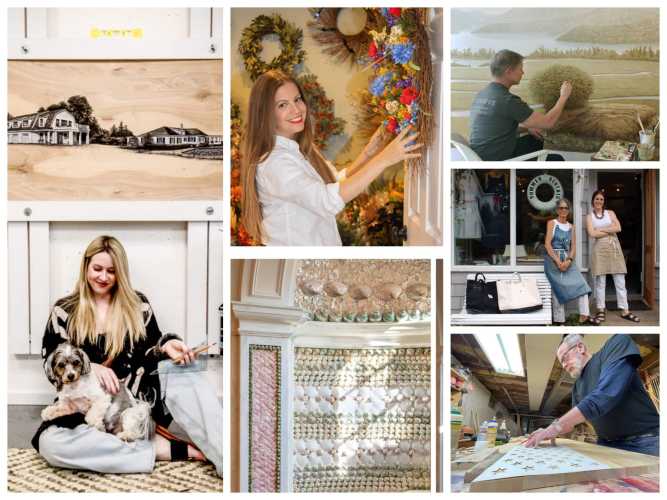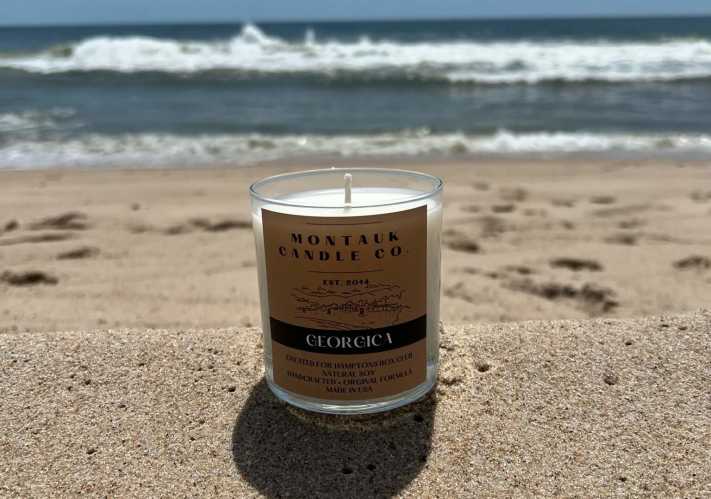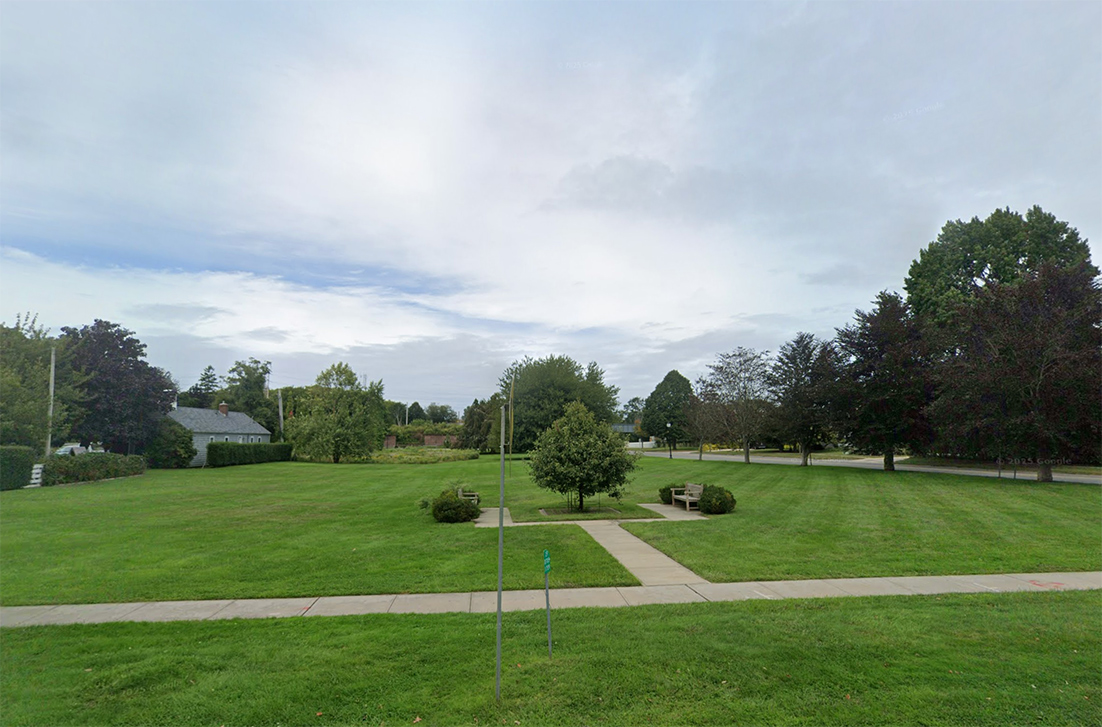Back in May, muralist Jil Gordon was working in the guest bathroom of a luxury waterfront home that was being remodeled. While other craftspeople work to keep a home’s outside separate from the inside, she was creating a ceiling that looked like an open sky.
“(The homeowners) wanted it to be exciting when you walked in,” Gordon says from her Delray Beach home, explaining that the mural took four weeks to paint on a 12-foot-high ceiling. “They wanted a ‘wow’ effect.”
Gordon, who specializes in murals that appear real, is in the business of creating that “wow” effect.
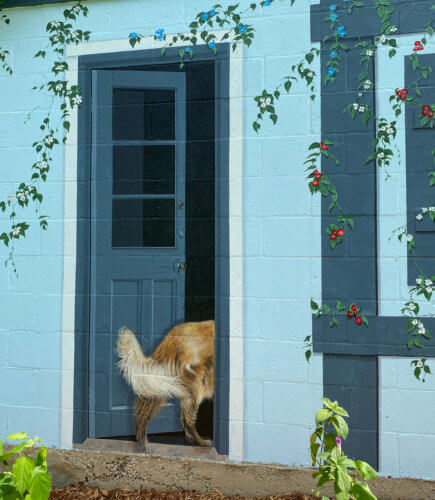
A kind of magician with a paintbrush, she also painted the walls of a corridor in the same three-story, 10,000-square-foot house leading to an actual marquee from a theater.
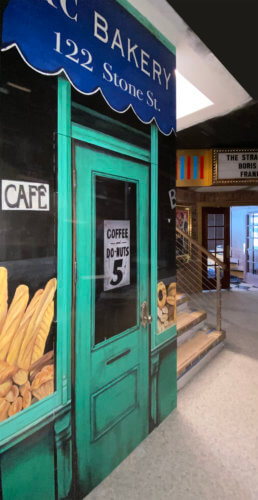
A corridor that leads to the theater looks like the entrance of a turn-of-the-century bakery that had been family-owned. “It had windows filled with baguettes and name awning above,” she says. “It was very personal to their family business.”
Gordon transforms walls into anything from windows to doors to landscapes, to whatever clients want using a technique known as trompe l’oeil.
“Trompe l’oeil in French means to fool the eye. It’s a centuries-old technique that brings one into the dimensional aspects of your wall, ceilings or surroundings,” she says. “It looks real and three-dimensional.”
A painter who also does portraits and fine art, her tagline is, “Every surface is a canvas. It doesn’t matter if it’s a wall, a ceiling, a tabletop,” she says. “Any surface can be transformed.”
Gordon has been commissioned around the country, turning even the plainest structure or room into one with a view.
“I went down to Baja, California, in a coastal town. At the end of the pool was a maintenance house with a bathroom,” she says. “I did a trompe l’oeil of a whale jumping out of the water. I had the shoreline and the crashing waves and the beach had turtles going into the water.”
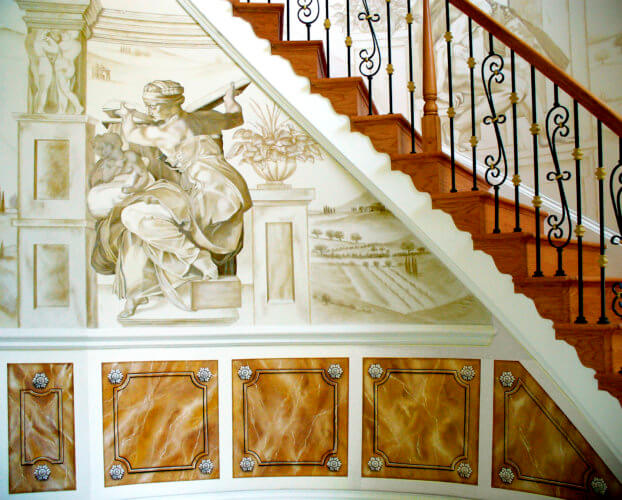
Inside Out
She says clients often want the indoors to look like the outdoors. “They want the trompe l’oeil to take them someplace else,” she explains. “They want to transform their feeling when they walk in. They want to go somewhere, whether it’s a memorable place or a fantasy.”
Some murals replace wallpaper, paneled wood or blank walls, but all have one thing in common.
“It needs to be real, like you could open a door or look over a balcony,” she says. “It’s the 3-D realism, the detail.”
In a large home in McLean, Virginia, she created a panoramic foyer with a European influence, including faux finishes.
“The fireplace hearth had imported, black marble,” she recalls. “I recreated the color and marbling of the actual imported marble.”
While residential murals don’t reach as many people as art in museums, Gordon traces her interest in murals to one of the greatest artists of all time.
“I was overwhelmed early in my life by Michelangelo,” she says. “That’s where I found my desire and inspiration to be a realistic painter.”
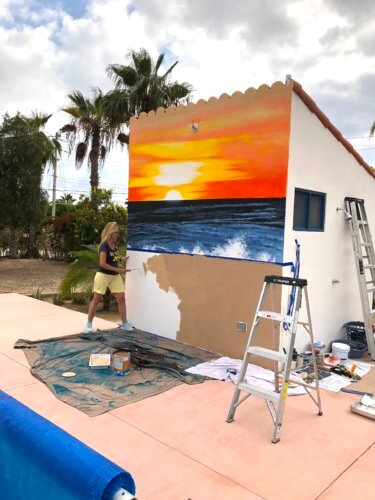
Portrait of the Artist
Gordon grew up in Detroit, Michigan, with very creative parents who were also involved in the arts. She stopped using the second “L” in her first name when she was 10 years old, creating a name that now stood out and was truly individual.
“Everybody knew me as Jil with one L,” she says. “Later on, I went to court and legally took one L off my name.”
As a child, she helped decorate classrooms rather than simply waiting for art class. “I was always drawing and decorating bulletin boards for the teachers,” she remembers. “My mom said, ‘How would you like to take some lessons?’ I said, ‘Absolutely.’”
Her mother took her to private art lessons where she learned the basics of perspective, pencil drawing, oils, acrylic painting and other mediums.
“I saw the Sistine Chapel when I was 17 years old. They had to drag me out of it,” Gordon says. “It was the dynamic color that Michelangelo always used. You didn’t want to take your eyes off it. It captured you. It looked so real.”
She graduated from the University of Michigan at Ann Arbor with a bachelor of fine arts and a concentration in illustration and painting. Her initial interest in medical illustration gave her a “foundation in realism.”
“I went out into the world of advertising,” she says.” I was hired as an illustrator for newspaper ads.”
She worked for Montgomery Ward in Southfield, Michigan, at a time when every object was hand drawn, and then other advertising firms.
“My skills are blended,” she says, “Not only am I a realistic illustrator and painter, I’ve been a graphic designer for over 40 years.”

Art Across America
If her murals crisscross the map, that’s in part because Gordon has lived in different regions. She worked in the San Jose area of Silicon Valley in the 1990s. While she was Atari’s main illustrator for printed computer game instruction manuals, she took courses in “faux” and trompe l’oeil. And soon she was working miracles.
She helped transform a college professor’s home gym into a slice of his native country in the Caribbean complete with a faux water view.
“While working out, he wanted to see the ocean that reminded him of his home,” she says. “This was a panoramic mural with five windows.”
She brought The Beatles into the home of someone who “lived and breathed The Beatles,” turning a room into a sort of shrine to the band. She transformed a ceiling into The Beatles’ first album cover.
Gordon also made prints on canvas of other famous Beatles albums and installed those as part of the mural adorned with the main chorus from “Imagine.”
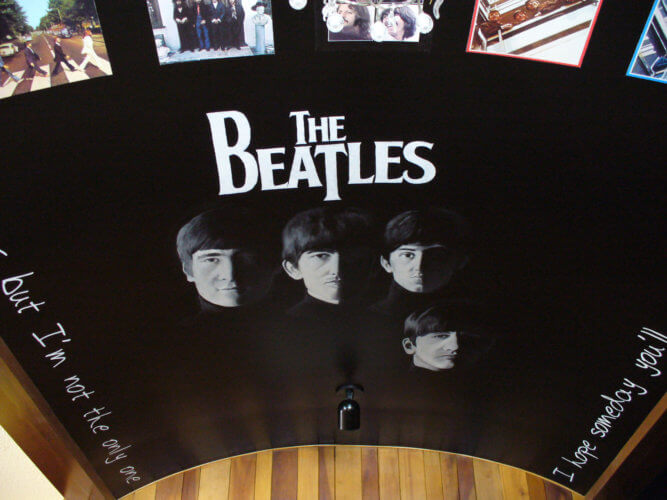
“People will have a door that they want to match their wood walls,” she says of her faux finish work. “I‘ve done some very fun and meticulous wood graining on metal doors.”
Gordon explains the work is “very laborious,” but when it’s done, people often have not just a new ceiling or wall, but a new world.
“I did a children’s room mural that looked like a locker room,” she says. “Above the jerseys were cubby holes. One had a basketball.”
She says the boys went into the room to play while the mother was there. When a boy mistook the painted basketball for the real thing, he reportedly said, “Can I take down that basketball and go play?”
Trompe l’oeil certainly had done the trick.
This article appeared in the latest issue of Behind The Hedges. Click here to read the digital version of the magazine. To read more Master Craftsman columns, click here. To recommend a Master Craftsman for a future issue, email TVecsey@danspapers.com.

